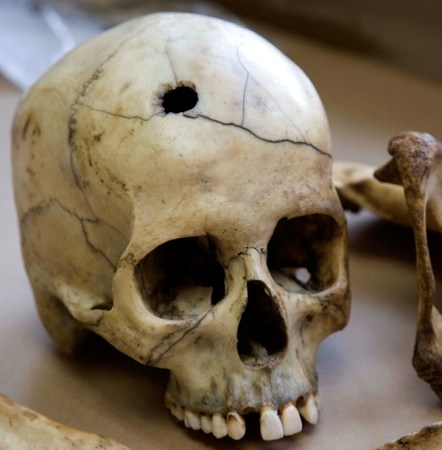

They haven’t discovered a cure for the beleaguered bald man yet, but scientists recently identified two genetic variants that, when their powers are combined, make affected Caucasian males seven times more likely to experience male-pattern baldness.
The scientists conducting the study, from McGill University, King’s College London and GlaxoSmithKline Inc., studied 1,125 Caucasians who had been assessed for male pattern baldness. Male-pattern baldness is the most common form of baldness, where hair loss begins above both temples carving an M or horseshoe shaped hairline. On the previously unsuspicious chromosome 20, the team found two culpable genetic variants. The findings were confirmed on an additional 1,650 Caucasian males. Sorry to all the non-Caucasians out there, researchers say males of every race are probably just as likely to have these genes as well, they just haven’t been studied yet. In fact, researchers say one in seven men has both of these genetic variants—fourteen percent of the total population, so if anything, the bald man certainly does not walk alone.
Though there is no solution immediately in sight, finding the cause may take scientists one step closer towards the cure. That could spell good or bad news for an industry who makes multi-million dollar profits on bald men (or their wives, girlfriends, or partners) every year. Hair transplants in the United States exceeded $115 million in 2007, and medical therapy for male-pattern baldness worldwide generated over $405 million in revenues. Rogaine, beware! “Early prediction before hair loss starts may lead to some interesting therapies that are more effective than treating late stage hair loss,” said Dr. Tim Spector of King’s College.
There is also a known genetic variant that contributes to baldness on the X chromosome (hence the theory that baldness follows the mother’s genetic lineage), but this scientific breakthrough proves multiple genes cause that bare head to shine through.
Male-pattern baldness affects a third of all men by age 45, and younger gents can take a look at their fathers and grandfathers for an idea of where they’re headed: more than 80 percent of cases are hereditary. But who knows how fast this science will progress? Maybe granddad’s horseshoe-patterned head isn’t your destiny after all.
Via Eurekalert






